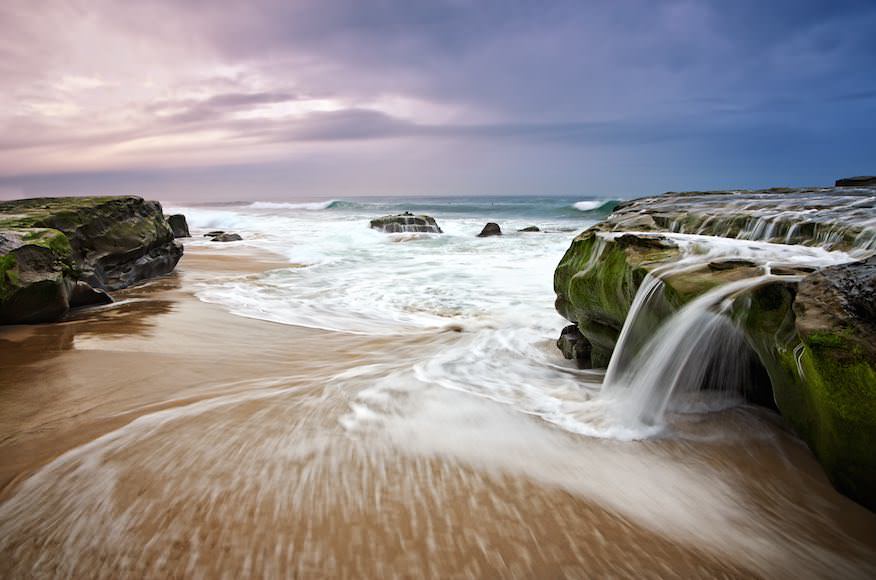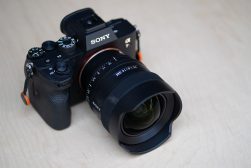






Scott Davenport
Landscape | Last Updated: April 4, 2024
My name is Scott Davenport and I’m a landscape photographer based in San Diego, California. I’m very fortunate living in San Diego because there’s such a diverse set of locations within just a few hours drive. Beaches, deserts, mountains – any can be done as a day trip. If you start early and push it, you can hit all three in a single day!
With such a wide variety of shooting choices, I spend a lot of time in and around San Diego. That means most of my shoots are finished in a handful of hours. No matter the destination, I always travel light. All the gear except the tripod has to fit in a single bag or it’s not coming along.
I’ve never been too much of a gear guy. The nerd in me gets all abuzz when a new camera or lens is announced, but the pragmatist in me keeps the nerd in check. That being said, I’m very much in tune with the value of good gear. Before I purchase new gear, I use a simple litmus test:
“Will this gear help me make a better photograph?”
Answer honestly and you’ll make a wise decision much more often than not.
Camera Body
In the spring of 2015, I switched camera systems from a Nikon D7000 to a Sony A7R. I still put my Nikon to good use as an in-studio video camera for filming training videos and tutorials. It also currently acts as my backup body for extended shoots.
I am very happy with the switch to the Sony system. Interestingly enough, even though I always travel light, what motivated my switch was not the allure of the lighter mirrorless systems. Lenses motivated my switch.
My Nikon lenses were good – not great, but good. I was in the market for a sharper set of lenses, in particular a very wide angle lens. High end Nikon glass, especially those wide angle lenses for landscape photography, get expensive. Soon, I was considering non-Nikon, and the mirrorless systems could not be ignored. A benefit of traveling light is I was not heavily invested in Nikon glass.
I chose the Sony A7R. It’s well constructed, has good controls, and is very customizable. The Sony A7R controls were easy to learn, too. Within a couple of weeks my muscle memory had adapted and I rarely needed to look at the controls when setting up a shot.
Coming from the Nikon D7000 there were several immediate benefits, such as higher resolution and a full frame sensor. It’s also been a joy having a mobile friendly camera. Sending photos from the camera to my mobile for in-the-field social media shares is convenient and fun.
More importantly, switching to Sony has enabled me to make better photographs. The focus peaking feature is great for fine tuning the focus. I use this in conjunction with auto-focus often. I also spend a lot less time with my chest in the dirt composing low-to-the-ground shots courtesy of the articulating screen.
Lenses
I carry three lenses:
- Vario-Tessar T* FE 16-35mm F4 ZA OSS
- Vario-Tessar T* FE 24-70mm F4 ZA OSS
- FE 70-200mm F4 G OSS Full-frame E-mount
I’ve found each lens to be well crafted and sharp. The 16-35mm shows a bit of chromatic aberration but that’s easily corrected in Lightroom.
When out shooting landscapes, I’m generally using the 16-35mm or the 70-200mm. On the beaches of San Diego (and I’m there a lot), I’m shooting wide.
The Sony 16-35mm f/4 lens doesn’t spend much time at the upper end of that range. The Sony 70-200mm f/4
comes out more often when I’m on hilltops or in the desert. The longer lens is good for creating more intimate landscapes or compressing distances, such as the roll of the hills as they become distant mountains.
I turn to the Sony 24-70mm f/4 most often when I’m in more urban settings, or want versatility without having to change lenses. This is a great lens for travel or photo walks. I recently traveled through Spain and Portugal and the 24-70mm was my go-to lens for the busy days of walking through cities and scouting locations for golden hour shoots.
Tripod
A tripod is one of the most crucial pieces of equipment a landscape photographer owns. I’ve been nothing less than thrilled with my Really Right Stuff TVC-34L Tripod and BH-55 LR Ball head. I held out a long time (read as saved my pennies for a long time) to make sure I did my tripod purchase right.
Everything about Really Right Stuff screams quality. When you hold this tripod, it’s clear a lot of thought and care went into the design. And that same care went into the craftsmanship. It’s a triple threat – sleek, elegant, and strong.
The TVC-34L has very good height range, from about 4 inches (~10cm) to about 6 feet (~1.8m). It’s very versatile. The dials and knobs on the BH-55 LR are smooth and their large size make it easy to work with gloves on (yes, it gets cold at night in the San Diego desert). I opted for the lever release and sprung for the L-plate mounting brackets so mounting and dismounting the camera is fast and when it’s locked in place, the body is secure.
Most importantly, Really Right Stuff tripods are rock solid. Stability is extremely important for landscape photography. Stability means better photos. If you shoot landscapes, you know you’re often in low light and longer exposures are commonplace. I have not had any issues with “ballhead creep” – once the knobs are tightened down, the ballhead isn’t moving.
Accessories
The remainder of my bag is a mix of filters, memory cards, and a mild sprawl of cables, batteries, and other doodads.
- B+W Clear MRC Filters: I almost forgot these were in my bag because they’re always on my lenses to protect the front element.
- Tiffen Circular Polarizer
: A key filter when shooting outdoors, especially with reflective surfaces like water
- Black Rapid RS-4
: A great strap for urban treks and travel. Your camera is securely fastened and always at the ready.
- Cable release & wireless remote: Small but essential tools to trigger the camera without introducing camera shake. I have generic brands and they work just fine.
- Sony BC-QM1 compact charger
and 4 Sony NP-FW50 batteries: Why 4 batteries? The battery life is far shorter than what I was accustomed to with Nikon. That’s about my only complaint with the Sony A7R.
- Lexar 1000x SDXC Cards: At least two or three in the bag at all times.
- Eyelead Sensor Cleaning Kit: Just in case I need to clean the sensor when I’m away from the studio.
The Bag Itself
Everything except the tripod fits snugly in my ThinkTank Urban Approach 15 backpack. I like this bag because it’s light & compact yet sturdy and well padded. There’s also a pouch for my MacBook Pro when I’m on the longer shooting trips, or just want to process photos at the nearby coffee shop after a morning shoot. This bag also fits very comfortably beneath the seat on airplanes. If the airlines limit the size of carry-on bags (again), I’ll still be just fine.
I hope you found this informative… and maybe even entertaining. If you’re visiting the San Diego area, give me a shout. Maybe we can connect for a shoot at the beach.

Check out these 8 essential tools to help you succeed as a professional photographer.
Includes limited-time discounts.












